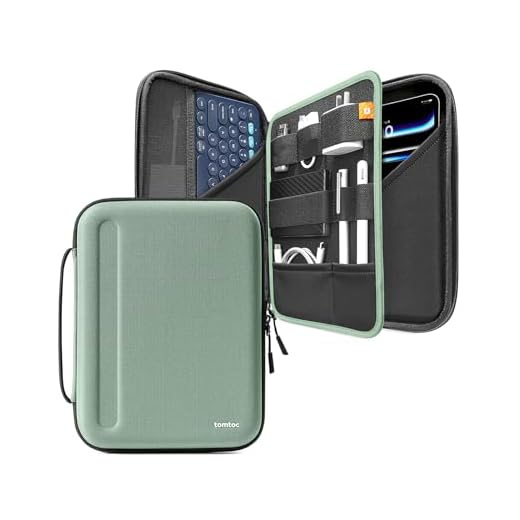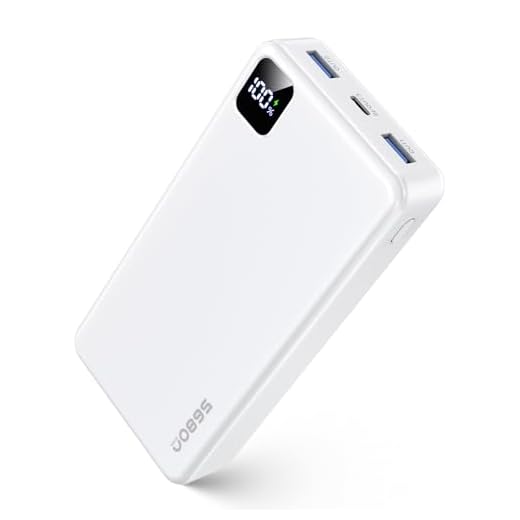







Travelers should avoid placing tablets in their checked baggage. Airlines and security agencies recommend keeping these devices in hand luggage to mitigate the risk of damage and enhance security measures. Tablets contain lithium batteries, which are subject to specific regulations regarding air travel.
In case a tablet is absolutely necessary to be stored in larger bags, ensure it is properly cushioned and protected. However, for safety and accessibility, it is better to carry it on board. This allows for quick access if needed and minimizes the chance of loss or theft during transit.
Before traveling, check airline policies regarding electronics in hold baggage. Some carriers may have additional rules or warnings regarding devices with lithium batteries. Staying informed can prevent complications and ensure a smoother travel experience.
iPads in Checked Baggage
Transporting these devices in your suitcase is not advisable due to various risks associated with handling and storage. Instead, they should remain with passengers in the cabin. This minimizes the potential for damage and theft.
Here are some key points to consider:
- Fragility: Electronic devices require careful treatment. Stowing them in a suitcase, subjected to potential impact during transport, poses a risk.
- Security Checks: Devices are often subjected to additional scrutiny at security checkpoints if carried on board. Keeping them accessible can expedite this process.
- Battery Regulations: Certain airlines have specific regulations related to lithium-ion batteries, often prohibiting large batteries from being placed in the hold.
For optimal protection, utilize a sturdy case designed for travel to safeguard the device during transit. This ensures that the item remains functional upon arrival at your destination.
Airline Regulations on Transporting iPads
Transporting tablets in the hold of an aircraft is generally not recommended, with most airlines advising against it due to security and safety protocols. It is advisable to keep these devices with you in the cabin to mitigate risks associated with battery malfunctions.
General Airline Guidelines
Airline regulations may vary, so passengers should always check with their specific carrier. Major airlines typically allow battery-operated electronics, including tablets, in cabin baggage, but restrictions may apply for devices with non-removable batteries. Always ensure that your gadget is fully powered off before placing it in your carry-on items.
Battery Safety Regulations
Most airlines limit the capacity of lithium batteries that can be transported in checked items. If your device has a battery capacity exceeding 160 watt-hours, additional measures may be required. For safety, keep devices with large batteries in a protective case if traveling in cabin baggage.
| Airline | Carry-On Policy | Checked Policy |
|---|---|---|
| Airline A | Permitted | Not Recommended |
| Airline B | Permitted | Not Permitted |
| Airline C | Permitted | Permitted with Restrictions |
For travelers seeking additional convenience, consider packing a best packable backpack for travel to safely store your electronic devices. Additionally, having a reliable best inverted folding umbrella can keep you prepared for unexpected weather while you’re on the go.
Risks of Packing iPads in Checked Luggage
Avoid placing tablets in hold baggage. The potential for damage and theft escalates significantly. Frequent luggage handling by airport staff can lead to impacts and drops. These devices are sensitive to physical stress, risking internal hardware failure.
Battery Hazards
The lithium-ion batteries used in tablets pose a fire risk, especially under high pressures and temperatures often encountered in cargo holds. If a battery malfunction occurs, it can ignite and cause a serious incident. Airlines generally prohibit devices with damaged batteries from being transported in the hold.
Theft and Loss Concerns
Checked compartments are hotspots for theft. Items left behind can be easily accessible to individuals lacking authorization. High-value gadgets like tablets attract unwanted attention, making them targets for opportunistic thieves. Always retain valuable electronics in your carry-on bag for enhanced security.
Alternatives to Transporting Tablets in Baggage
Store devices in dedicated protective cases and keep them in personal belongings. Use padded sleeves or specialized bags designed for electronics to minimize damage during transit.
In-Flight Storage Options
During flights, place the gadget in the seat pocket in front of you or hold it securely in hand. Make sure to always comply with airline policies regarding electronic device usage, especially during takeoff and landing.
Shipping Services
Consider utilizing shipping services that specialize in fragile items. This method ensures safe delivery without the risk associated with airline travel. Always opt for insurance to cover potential damage during transit.
For additional tips on managing household equipment effectively, check out the best pressure washer for house richmond va.
Preparing Your iPad for Travel Safety
Prior to traveling, ensure that your device is fully charged. This allows for easy access during security checks and potential usage during a layover. It’s wise to back up all important data to a secure cloud service or external drive, protecting against loss or damage while away.
Utilize a durable, padded case designed for impact resistance to enhance protection against physical damage. This minimizes risks from bumps or drops, especially in unpredictable situations like airport screenings.
Disable all sensitive personal information through the usage of a strong password or biometric locks. Enable tracking features, such as “Find My Device,” to assist in recovery if the device is misplaced or stolen.
Consider removing any unnecessary apps that may consume battery power during travel. Streamlining your applications can lead to longer battery life and aid in remaining organized while on the go.
Keep your charger and necessary cables readily available in an easily accessible pocket or compartment of your carry-on. This prevents unnecessary delays when needing to recharge.
After boarding, avoid placing devices on top of your seat or in areas where they may slide or fall. Securely stow your equipment in a designated safe area, maintaining vigilance to ensure its safety during the flight.
Battery Restrictions for iPads in Checked Luggage
Transporting devices powered by lithium-ion batteries requires adherence to specific guidelines. Devices like tablets, which contain these batteries, face restrictions in certain scenarios.
The International Air Transport Association (IATA) and various airlines stipulate that lithium-ion batteries exceeding 100 watt-hours are prohibited in the hold. Most tablets remain well within this limit; however, it is advisable to confirm the watt-hour rating before travel.
For batteries between 100 and 300 watt-hours, airlines may allow them only as carry-on. Ensure to check individual airline policies to verify any special requirements.
When traveling, it’s wise to:
- Remove the device from its case to avoid overheating.
- Charge the battery to a minimum of 30% to prevent unexpected power issues.
- Securely protect the device to avoid accidental activation during transport.
Always keep checking for updates from airlines and regulatory sources regarding their policies on battery transportation, as these can alter based on safety assessments.
Traveling Internationally with an iPad
Before traveling abroad, ensure that your device is fully functional and all important applications are updated. Check that your content is accessible offline to avoid connectivity issues while on the go.
Save important documents, tickets, and itineraries directly onto your device. Utilize cloud services judiciously, as internet access can be unreliable in different regions.
Consider purchasing a travel insurance policy that covers electronic devices. This protects against loss, theft, or damage during your trip.
For smooth security checks at airports, remove the gadget from its case and place it in a separate bin. Be prepared to power it on if requested by security personnel to verify functionality.
Utilize a protective case to prevent scratches and potential damage, especially in transit. A sturdy, padded sleeve can also cushion your device from impacts.
Familiarize yourself with international power specifications. Carry a universal adapter to ensure you can charge your device without issues. Consider a portable charger for added convenience when away from power sources.
Check travel restrictions and regulations in your destination country regarding electronic devices to avoid any unexpected complications. Certain airlines or countries may have specific guidelines that differ from your home country.







